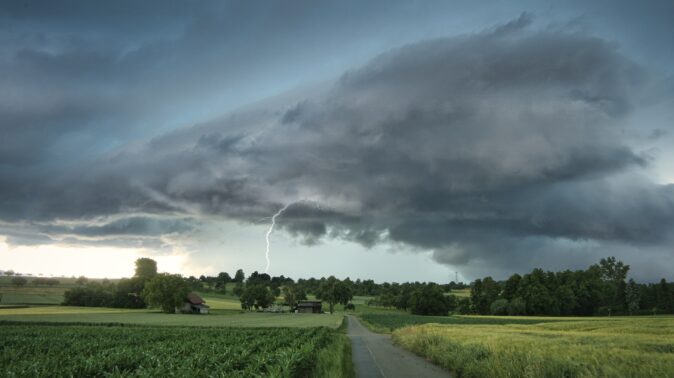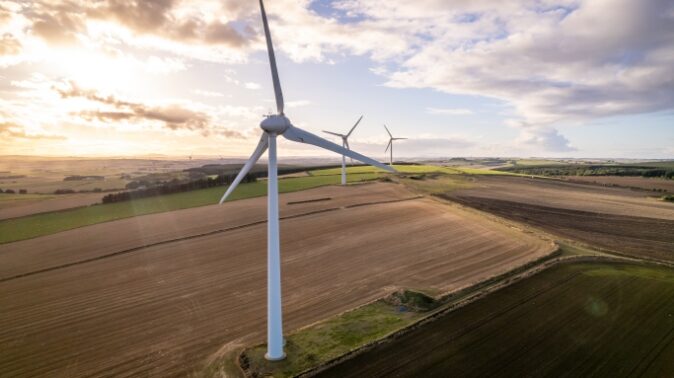A tale of two Julys
Being the height of summer, July is normally one of the driest and warmest months of the year. In the East of England, it normally yields around 200 hours of sunshine, average temperatures in the low twenties and total rainfall values of 45-50 mm. However, the British summer is known for being extremely changeable, with some days having blue skies and sunshine and temperatures in the high twenties, and others having rain and temperatures in the mid-teens. One of the main drivers for this changeable weather is the Jet Stream. When located to the north of the UK, it often provides warm and dry settled weather from the continent, dominated by high-pressure systems. The opposite occurs when the jet stream is located either in line or to the south of the UK, bringing cooler temperatures from the maritime region, and lots of low-pressure systems (and therefore rain) from the Atlantic.
For the beginning of this summer the jet stream has been consistently stuck either over or south of the UK, providing the unseasonably cold temperatures and higher amounts of rainfall most of us have seen. It therefore goes without saying that this July has been wetter than average so far. In fact, when totalling rainfall values for the 1st-22nd, some areas are already matching or even doubling that of the average monthly totals (seen on the 2024 rainfall maps below). This is especially the case for some areas of West London, Hertfordshire and Essex, with station values reaching between ~87-100 mms; Ealing, West London, has had more than 4 times the average rainfall for July in just the first two thirds of the month. Due to the Jet Stream’s position, many storms and convective events have blown over the UK and looking at both maps, it seems that the convective storm tracks travelled consistently over the same area, leading to these incredibly high totals.
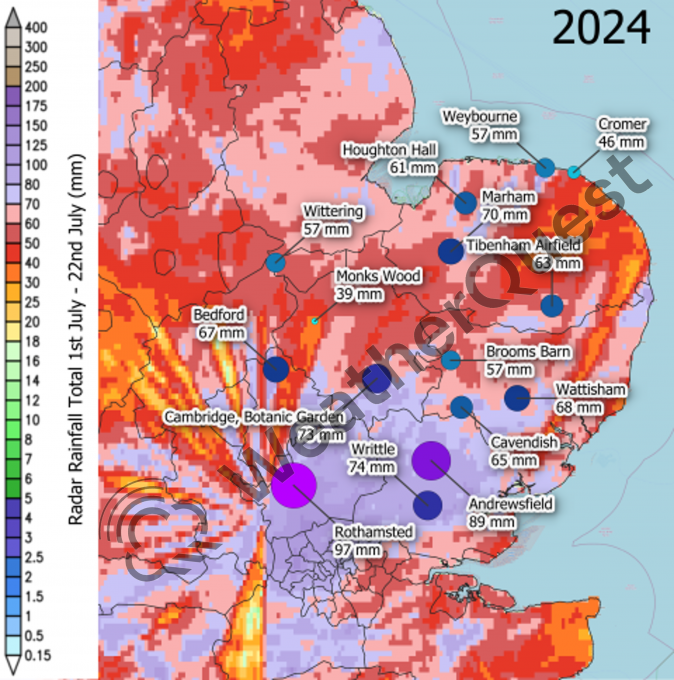
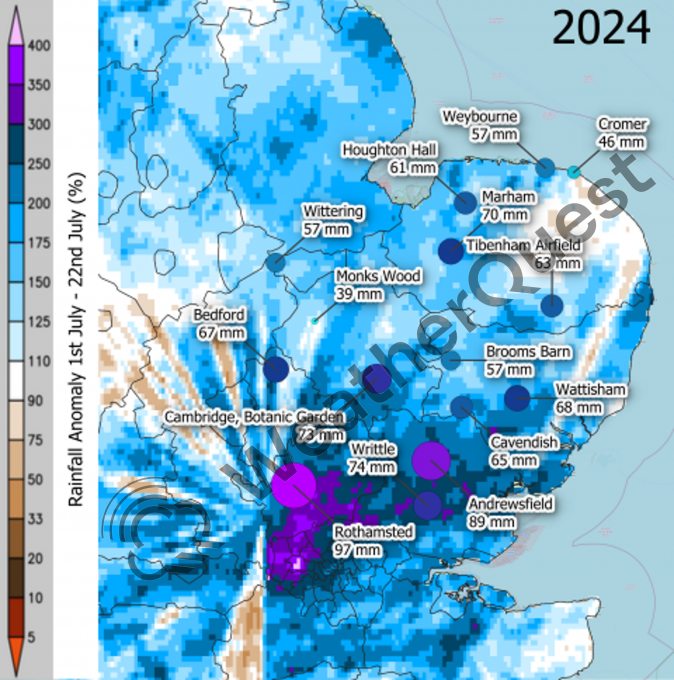
There was a change during the 18th-21st, where the jet stream to the west of the UK sank further south, before heading north again above the UK. This led to southerly winds, bringing with them hot continental temperatures and sunshine, with the warmest temperature reaching 31.9oC on the 19th at St James’s Park in London. This only lasted around three days however, when on Sunday 21st a weather front moved over the UK, reverting the jet stream to the pattern we have had for most of the summer so far, with it located just to the south of us and providing westerly winds and unsettled weather. Unfortunately, with no sign of this changing as we head into the latter stages of the month, wetter weather and cooler temperatures will seemingly close out July 2024, with August showing the first sign of more settled weather.
Only two years ago, in July 2022, it was an entirely different story. With a few heatwaves throughout June and rainfall values below average, the beginning of July started in a rainfall deficit. From the 1st to the 5th, it was cooler than average, but on the 6th of July, temperatures rose to ~2oC above average, and by the 10th many areas exceeded 30oC. This was caused by the jet stream over the Atlantic, which had a sharp southern dip over the ocean south of Greenland, leading it to head north above the UK. This kept the UK in a warm and settled region of continental air, with a high-pressure system that slowly moved across the UK, dominating the weather for a couple of weeks. Temperatures kept rising, with little to no rainfall across much of the UK, ultimately leading to the unprecedented temperatures seen on the 18th and 19th (40.3oC recorded at Coningsby).
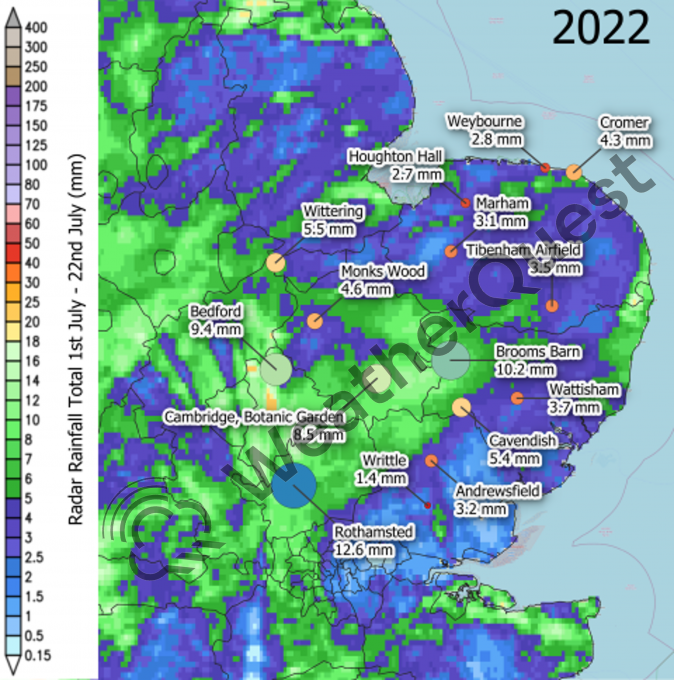
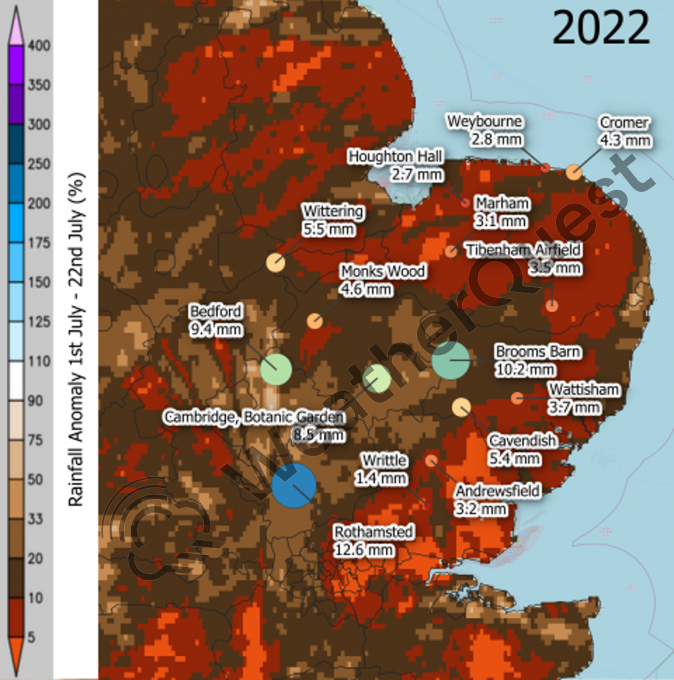
Despite being the same time of year as the 2024 example, you can see on the 2022 rainfall and anomaly maps above that many areas didn’t even reach 20 mm of rainfall (one fifth of the average monthly total) across the 1st-22nd July period and some areas of Essex, East London and the South received less than 5% of the monthly average. This led to widespread hosepipe bans, as water consumption skyrocketed due to the heat, whilst reservoirs and water resources dropped to incredibly low levels. There was also a record number of fires across the UK, and the London Fire Brigade had its busiest day since World War Two. After this period, the jet stream gradually shifted eastward, bringing average temperatures acorss the UK and slightly more unsettled weather towards the end of July and into August 2022.
These examples show just how changeable and different each year can be, bringing their own individual challenges. This changeability will increase into the future, as our climate continues to change. With global temperatures rising, the Jet Stream will have more energy, amplifying the frequency of its meridional flow (sinusoidal wave type pattern) state, increasing the chances of the jet stream being either north or south of the UK, and extreme events such as those mentioned will become more common. It is therefore incredibly important to improve the climate resilience of the UK, and WeatherQuest will continue to provide support for all our clients’ sectors going forward.

